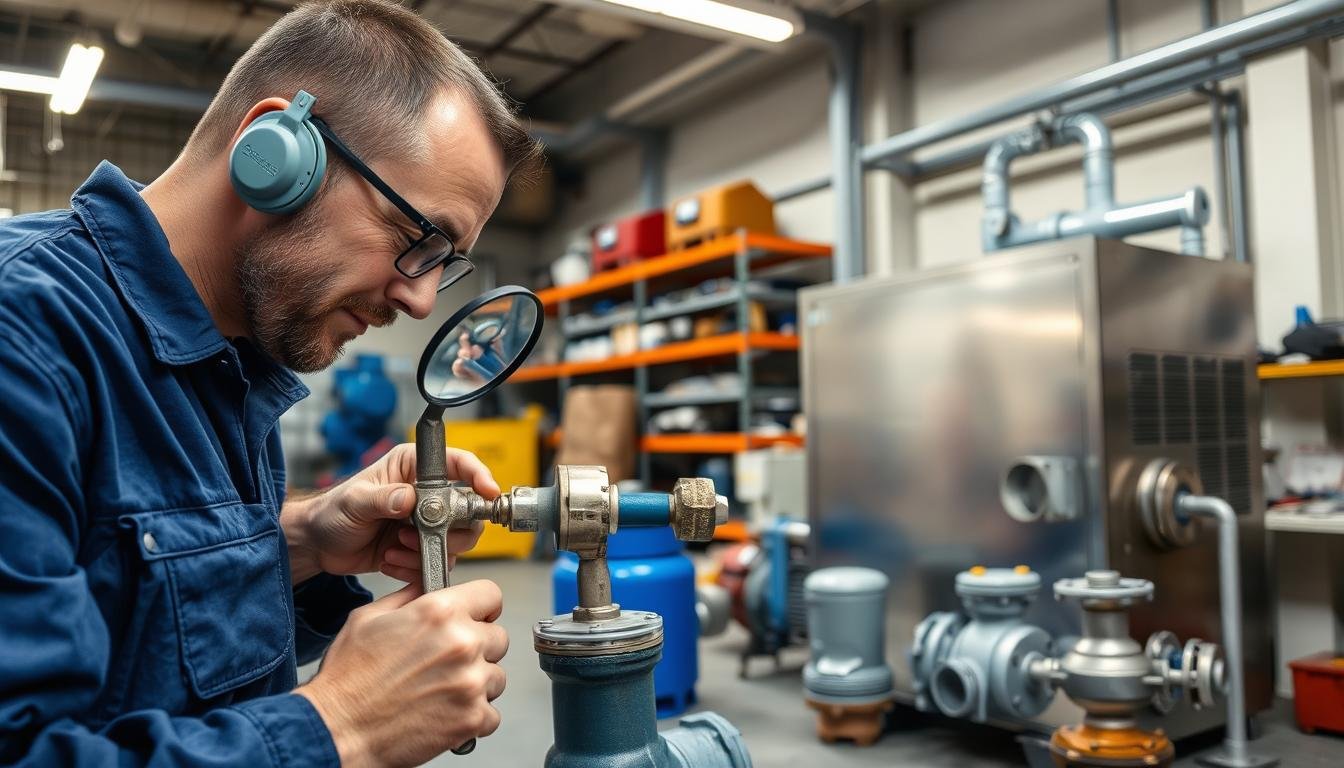In the industrial world, keeping static equipment in good shape is key to success. It includes looking after tanks, pressure vessels, and pipes. Regular checks are vital for safety and keeping equipment running well.
By focusing on maintenance, I catch problems early. This stops big issues and keeps everyone safe. It also makes sure we follow all rules and keep things running smoothly.
Understanding Static Equipment and Its Importance:
Static equipment is key in industries and stays in one place while working. You’ll find things like boilers, heat exchangers, and storage tanks. Each one has its own job, helping out in making things, processing chemicals, and making energy. Knowing how these pieces work is important for keeping them running right.
Static equipment is really important for keeping things running smoothly and safely. When these machines work well, it helps avoid big problems like leaks and accidents. Regular checks and upkeep help catch issues early, which keeps things running well and meets rules.
Key Maintenance Practices for Static Equipment:
Effective maintenance of static equipment is key to its long life and reliability. Preventive maintenance is a core strategy. It includes scheduled checks and services tailored to the equipment’s needs. This keeps the equipment in top shape and cuts down on unexpected downtime.
Condition monitoring is another vital practice I focus on. Advanced monitoring technologies help spot issues early. Regular inspections, like cleaning and non-destructive testing, catch problems before they get worse.
Having a clear maintenance schedule is critical. It makes sure all important checks are done on time. This boosts the equipment’s reliability and supports safe, long-term operations.
Common Challenges in Static Equipment Maintenance:
Maintaining static equipment is tough. Corrosion and aging can weaken equipment over time. This leads to performance drops and more maintenance issues.
Not having the right skills among maintenance staff makes things worse. A trained team can spot problems early. But, many places struggle to give the right training.
Following safety rules is also hard. There are strict rules for static equipment, and following them can be tough. Without a good plan, risks to people and money can grow fast.
Static Equipment Standards and Regulations:
Knowing the rules for static equipment is key for anyone in maintenance or inspection. The Occupational Safety and Health Administration (OSHA) and the American Society of Mechanical Engineers (ASME) set important guidelines. These rules help keep maintenance safe and in line with regulations.
Following maintenance rules is not optional; it’s often required by law in many fields. Companies must follow standards from groups like the American Petroleum Institute (API) and the National Fire Protection Association (NFPA). These rules help identify risks with static equipment, making workplaces safer.
It’s vital for businesses with static equipment to follow these standards every day. Keeping teams up-to-date with new rules through training is important. Staying in line with these standards keeps people safe and builds a culture of safety and responsibility.
Benefits of Regular Inspection of Static Equipment:
Regular inspections of static equipment bring many benefits. They help spot problems early, avoiding expensive repairs or replacements. This saves a lot of money and keeps operations running smoothly.
These inspections also make equipment last longer. By checking each part regularly, I keep everything in top shape. This means fewer breakdowns and more reliable performance. It’s a smart way to save money and keep work flowing.
Staying safe is another big plus of regular checks. Keeping up with safety rules and inspections creates a safer work place. It makes everyone more careful and reduces the chance of accidents. This keeps work going without interruptions.
In short, regular inspections are key to good equipment care. They make sure everything works well and safely. This is essential for keeping operations efficient and reliable.
Tools and Technologies for Inspecting Static Equipment:
Choosing the right tools is key for checking static equipment. Optical gas imaging cameras are a big help. They show gas leaks that we can’t see, making inspections safer and more efficient.
Ultrasonic thickness gauges are also important. They measure how thick materials are, spotting corrosion and wear. This helps me decide when to fix or replace equipment, keeping it running longer.
Thermal imaging devices are also a big plus. They find heat issues like electrical problems or bad insulation. Using these tools helps me understand equipment better.
I also use software for managing and analyzing data. It makes tracking findings and keeping records easier. Good data management helps keep maintenance organized and ahead of problems.
Future Trends in Static Equipment Maintenance:
The future of equipment maintenance is changing fast. The Internet of Things (IoT) is playing a big role. It lets us monitor and collect data in real-time, helping us make better maintenance choices.
Digitalization in maintenance is also on the rise. It’s making operations smarter and more efficient. This change is key to improving how we manage static equipment.
AI-driven analytics are changing inspections and maintenance. They help predict when equipment might fail, so we can fix it before it happens. This approach cuts down on downtime and costs, making equipment more reliable and safe.
Smart sensors are also important. They give us continuous feedback and insights. This helps keep equipment running at its best.
Lastly, digital twin technologies are becoming more common. They create virtual copies of real equipment. This lets us test and simulate without affecting the actual systems.
By adopting these new technologies, maintenance is getting safer and more efficient. It’s also becoming more sustainable for the future.
